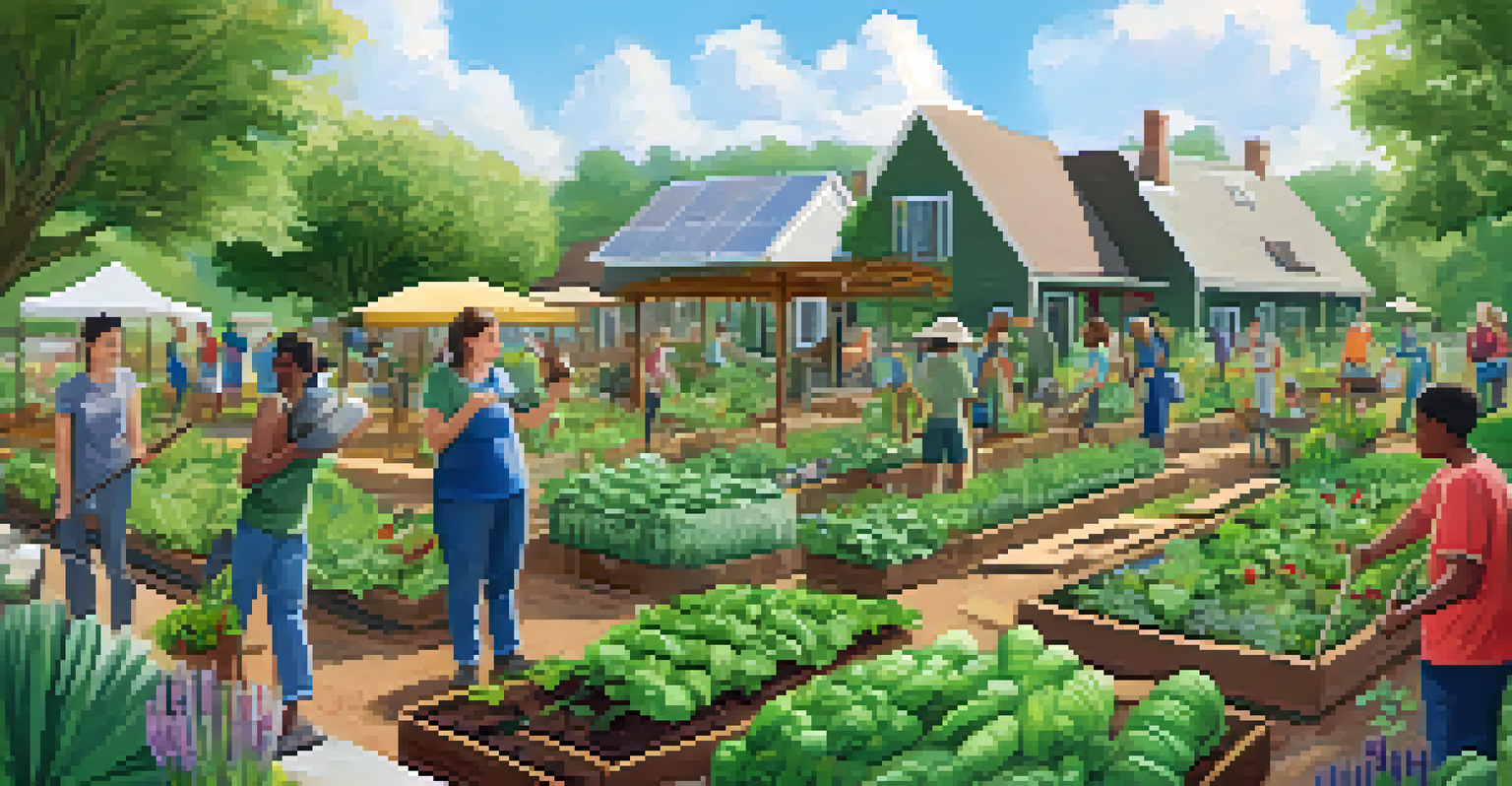Permaculture: Designing Sustainable Agricultural Ecosystems

Understanding Permaculture: The Basics of Sustainable Design
Permaculture is a holistic approach to agriculture that mimics natural ecosystems. It's about creating sustainable systems that can thrive without constant human intervention. By observing how nature operates, we can design agricultural practices that are both productive and environmentally friendly.
The ultimate goal of farming is not the growing of crops, but the cultivation and perfection of human beings.
At its core, permaculture focuses on the relationship between plants, animals, and the environment. This interconnectedness allows for a more resilient agricultural system, where every element plays a vital role. For instance, planting certain crops together can enhance growth and deter pests, reducing the need for chemical fertilizers and pesticides.
Related Resource
The beauty of permaculture lies in its adaptability; it can be applied to any scale, from small urban gardens to large farms. By implementing permaculture principles, we can work towards a more sustainable food system that benefits both people and the planet.
Key Principles of Permaculture: Designing with Nature
Permaculture is guided by a set of principles that encourage harmonious relationships within ecosystems. One of these principles is 'observe and interact,' which emphasizes understanding the natural environment before making changes. This means taking the time to learn about local climate, soil types, and existing flora and fauna.

Another key principle is 'catch and store energy,' which focuses on harnessing natural resources efficiently. For example, a well-placed rainwater harvesting system can store water for use in dry months, reducing dependency on external water sources. This encourages resilience and sustainability within the agricultural ecosystem.
Permaculture Mimics Nature's Design
By observing natural ecosystems, permaculture creates sustainable agricultural practices that thrive with minimal human intervention.
Additionally, permaculture promotes biodiversity, which allows ecosystems to thrive and adapt. By planting a variety of crops and integrating animals into the system, we create a balanced environment where pests are controlled naturally. This not only improves yields but also enhances the overall health of the ecosystem.
Designing Your Permaculture Garden: Steps to Get Started
Starting a permaculture garden can be an exciting journey into sustainable living. Begin by observing your space, noting sunlight patterns, water flow, and existing plant life. This initial assessment will guide your design choices, ensuring they align with the natural characteristics of your environment.
We won't have a society if we destroy the environment.
Next, sketch out a plan that incorporates diverse plants and elements. Think about companion planting, where certain plants can benefit each other. For instance, growing tomatoes alongside basil not only enhances flavor but also helps repel pests, creating a mutually beneficial relationship in your garden.
Related Resource
Finally, implement your design gradually, allowing time to observe how the system evolves. Permaculture is all about adaptability, so be prepared to make adjustments as you learn what works best in your unique space. With patience and care, your garden will flourish into a sustainable ecosystem.
Soil Health: The Foundation of Permaculture Success
Healthy soil is the cornerstone of any successful permaculture system. It's teeming with life, including microbes, fungi, and earthworms, all of which contribute to nutrient cycling and plant health. To build soil fertility, consider practices like composting, which recycles organic waste into rich, nutrient-dense soil amendments.
Additionally, cover crops can play a crucial role in maintaining soil health. These plants, grown during off-seasons, help prevent erosion, suppress weeds, and improve soil structure. When tilled back into the soil, they add organic matter and nutrients, creating a thriving environment for future crops.
Biodiversity Enhances Ecosystem Health
Integrating diverse plants and animals in permaculture systems fosters resilience, improves yields, and naturally controls pests.
Lastly, reducing soil disturbance is vital in permaculture practices. Techniques like no-till farming protect the delicate soil ecosystem and promote healthier plant growth. By prioritizing soil health, we lay the groundwork for sustainable agricultural success.
Water Management: Essential Strategies in Permaculture
Water management is a critical aspect of permaculture design. By capturing and utilizing rainwater, we can significantly reduce our reliance on traditional irrigation systems. Techniques like swales and rain gardens can help direct water flow and promote infiltration, ensuring that moisture reaches the roots of our crops.
Another effective strategy is creating ponds or water features that not only provide irrigation but also enhance biodiversity. These bodies of water can serve as habitats for various species, contributing to the overall health of the ecosystem. Additionally, they can help regulate temperature and humidity in the surrounding area.
Related Resource
Integrating water-efficient practices, such as drip irrigation or mulching, further supports sustainable agriculture. These methods reduce evaporation and soil erosion, allowing for more efficient water use. By managing water wisely, we create resilient ecosystems that thrive even in challenging conditions.
Biodiversity: A Key Element in Permaculture Systems
Biodiversity is essential in permaculture, as it fosters resilience and stability within ecosystems. By planting a variety of crops, we create a balanced environment that can withstand pests and diseases. For example, a diverse garden can attract beneficial insects, which help pollinate plants and control harmful pests naturally.
Incorporating animals into a permaculture system can also enhance biodiversity. Chickens, for instance, can help control insect populations while providing natural fertilizer through their droppings. This integration creates a dynamic ecosystem where each component supports the other, ultimately leading to healthier plants and higher yields.
Community Builds Sustainable Futures
Collaborative efforts in permaculture strengthen community ties and amplify the benefits of sustainable practices through shared knowledge and resources.
Moreover, preserving native plants and wildlife habitats is crucial for maintaining local biodiversity. By creating spaces that encourage the presence of local flora and fauna, we contribute to the overall health of the environment. Embracing biodiversity in permaculture not only benefits our gardens but also supports the planet.
Community and Permaculture: Building Sustainable Connections
Permaculture isn't just about individual gardens; it's also about building community connections. Collaborative efforts can amplify the benefits of sustainable practices, allowing knowledge and resources to be shared among members. Community gardens, for instance, provide opportunities for individuals to learn from each other while working towards a common goal.
Engaging with local organizations and initiatives can further enhance the impact of permaculture. Workshops, events, and volunteer opportunities foster a sense of belonging and encourage sustainable practices within the community. By working together, we can create a network of support that strengthens our commitment to environmentally friendly agriculture.

Ultimately, building a community around permaculture creates a more resilient food system. When individuals come together to share resources, knowledge, and experiences, they empower each other to adopt sustainable practices. In this way, permaculture extends beyond personal gardens, nurturing a culture of sustainability.